THE ORIGINS OF NATURAL PERFUMERY.
A sentimental introduction to the extraction of raw materials.
by Andrej Babicky, Certified Natural Perfumer
It is a long, demanding technique and requires constant access to fresh raw material, but for those like me who have a garden where they grow some fragrant plants, or a balcony or just a window, it could be an experiment to try. In my opinion in this way, through cultivation and extraction, we enter a more intimate and personal relationship with the raw material; we get to know it and we are often pleasantly surprised by the result obtained.
Enfleurage is a historical extraction procedure, developed in the Grasse region. Nowadays it is a technique almost completely disappeared, replaced by extraction through solvents. In recent years, a revival of this technique can be observed by natural perfumers who rediscover its potential and magic.
Enfleurage is used for the processing of flowers that contain low quantities of perfumed raw material or that are too fragile for other types of extraction or that can be altered with heat (jasmine, violet, lilac, narcissus, etc.). The basic principle lies in the ability of a fat base to absorb volatile odorous substances from the flowers/plants it comes into contact with. Historically, the fat was made up of animal or mineral fats or a mixture of these.
We know two types of enfleurage: hot and cold. Hot enfleurage was used for flowers that tolerated the high temperatures necessary to maintain liquid fat such as broom or rose.
The grease is spread on both sides of the chassis. Fresh flowers are placed on one side in contact with the fatty part. A new chassis is superimposed on top and consequently prepared and so on. An extraction chamber is created between the two plates where the odorous molecules are trapped in the fatty part: on the one hand, due to the direct contact of the material with the fat, on the other hand, the more volatile molecules are trapped in the overlying layer. The exhausted flowers are removed from the chassis (defleurage) and replaced with fresh flowers which this time are placed on the other side of the frame. This process is repeated several times (around 30). Saturated fat is called pommade and is marked by the number of cycles performed. The pommade is further treated by washing with ethyl alcohol, which dissolves the essence and part of the fats. The residual oils and fats can be eliminated through cooling and filtration. The extract can be then distilled at low temperatures to eliminate alcohol, or the alcohol can be left to evaporate to obtain an absolute. The extract thus obtained is called absolue ex enfleurage.
As I have already mentioned above, enfleurage, despite being laborious and time-consuming, is one of my favourites due to its magical ability to give us the olfactory profile of a flower as if it were a fingerprint.
I approached this technique because I wanted to capture the characteristic scent of wild violets, which I could not achieve with other types of extractions or replicate through accords. As a base, I have tried several types of vegetable butters and oils with a high melting point and long shelf life. My favourite, both for its durability and its easy availability, is deodorized coconut oil. I had chosen to use it without further additions of other oils or waxes as the temperatures during the period of violets flowering do not exceed 20 degrees. For the occasion, I simplified the classic enfleurage process using oven dishes and glass containers instead of chassison which I spread a thin layer of semi-solid coconut oil. The flowers were left on the grease overnight. After about 80 changes of fresh flowers, I got a faintly scented pommade of violet. You can imagine my disappointment because I was hoping to get a usable extract right away. Unfortunately, this was not the case. After some research, I decided to freeze the pommade of violets and to continue the same process the following year. I would have liked the new flowering season of violets to arrive immediately to be able to continue but I had to wait more or less patiently trying to refine my technique. With 200 refills in total, I got around 600 grams of perfumed pommade that I keep as a memento of this first experiment.
With time and various tests, I discovered that enfleurage can be done almost all year round, as long as you have fresh flowers available. Depending on the external temperatures, I added between 1 and 3% beeswax or rice wax to the coconut oil to make it more solid.
In addition to an experiment, it is also a game: to capture the decadent fragrance of dying lilies, I used slightly withered Casablanca lilies intending to catch their last breath. For each flower, I had to remove the pistils because I discovered to my expense that they dyed the fatty base yellow. With 60 refills I got an extremely fragrant pomade. Over time I began to incorporate different types of raw materials into the pomade by often playing with unrefined coconut oil with its tropical aroma and using it as a base for enfleurage of gardenia or plumeria flowers along with bourbon vanilla pods. The finely ground benzoin resin together with the iris powder incorporated into the pomade for Jasmine sambac enfleurage to create new odors or recreate complex and unique bouquets.
Pomade not washed with alcohol can be used as an excellent base for solid perfumes.
Some of the enfleurage created remains soaked in alcohol for several months, especially those created in the summer as I do not like to heat the pomade to keep it in a liquid state. Many of these are experiments without ever using them in a composition. They allow me to study a certain type of raw material and its behavior during extraction in a practical way. The time has not yet arrived, but I hope that in the future I will be able to create a perfume entirely made from raw materials extracted by myself that come from my garden and the surrounding area.
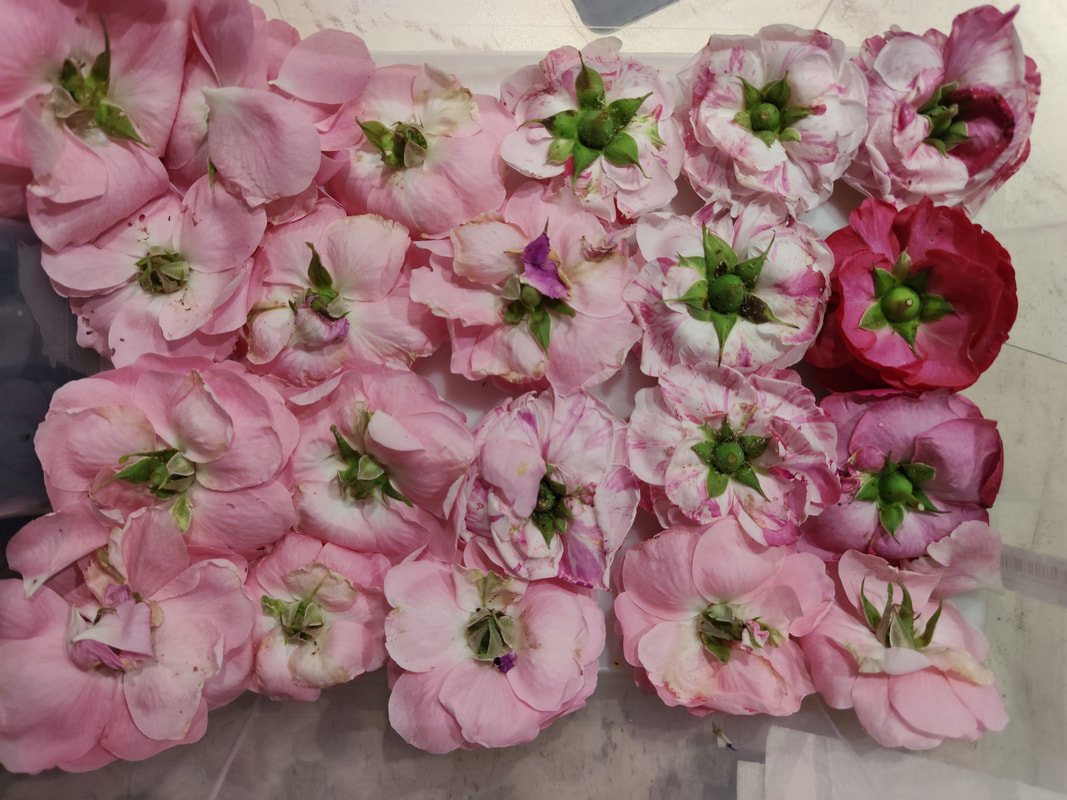
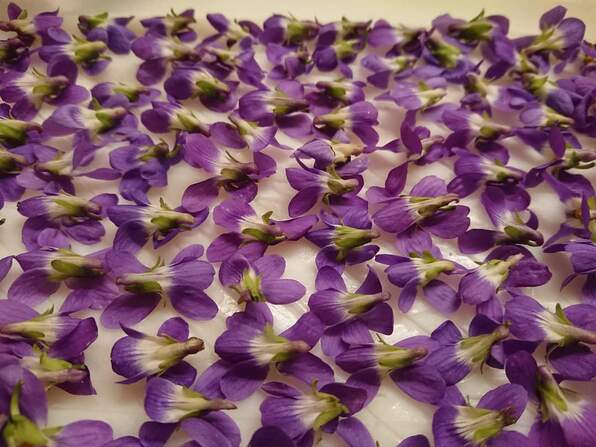
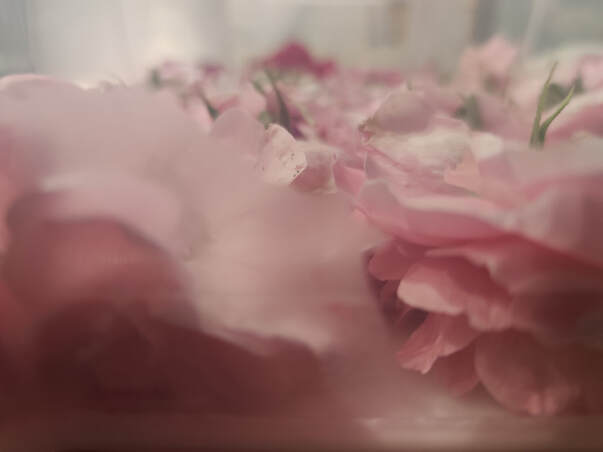
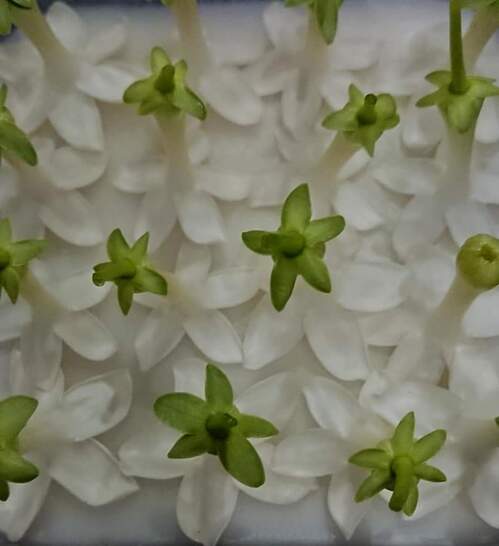
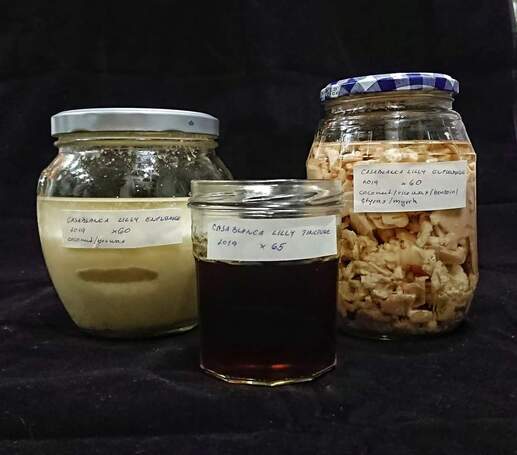
 RSS Feed
RSS Feed